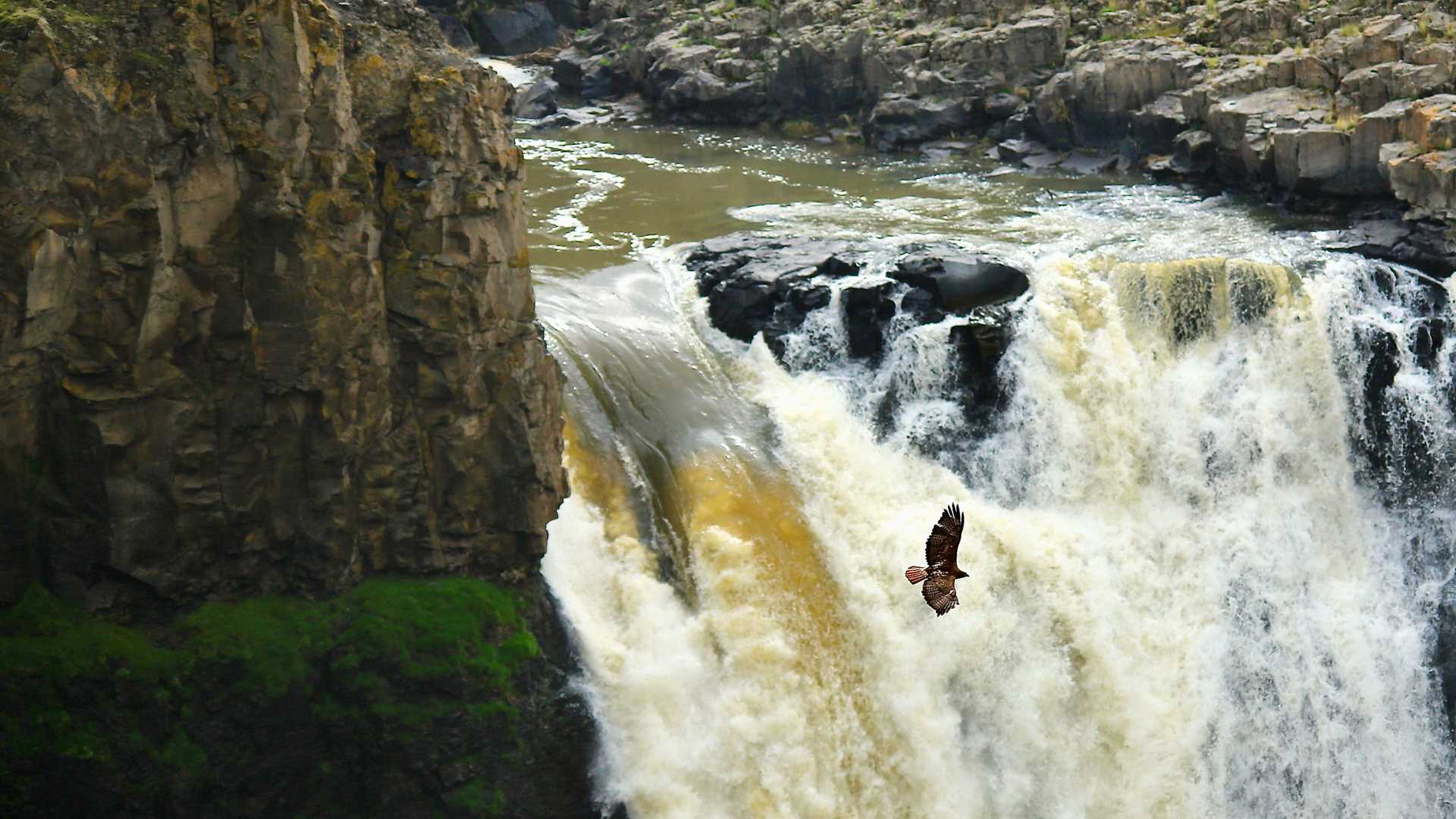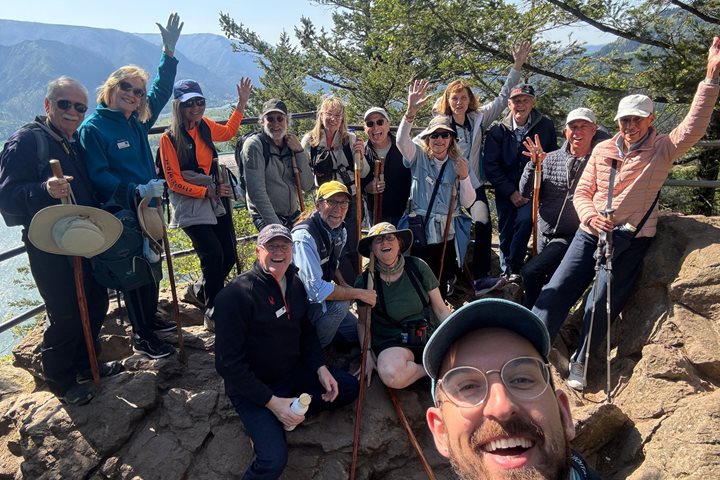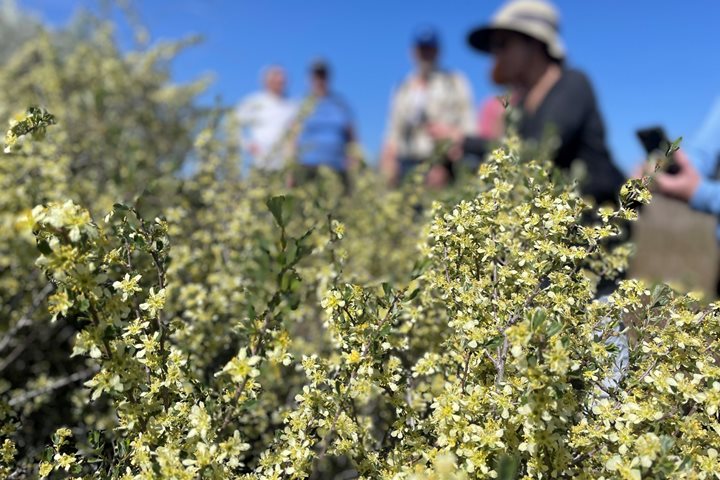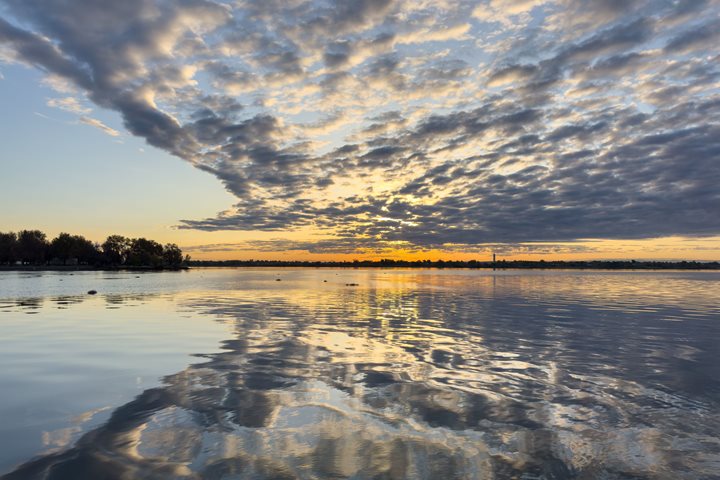An overcast morning greeted National Geographic Sea Bird as it perched alongside Lyons Ferry State Park at the confluence of the Palouse River. Guests departed by Zodiac to Lyons Ferry to meet the coach for Palouse Falls State Park. As the first Zodiacs departed, the sun broke through the clouds to shine down on the ship. The sun continued to shine while guests visited the Palouse Falls overlook. The spring melt was evident as the falls frothed with water. A variety of animals were spotted at the park, including ravens, raptors, and even the yellow-bellied marmots that have taken a liking to the watered lawns. After returning to Lyons Park, guests split up to go birdwatching or kayaking around the park and the surrounding marsh. After lunch, Zodiacs departed for the headwaters of the Palouse River. To access the river delta, drivers needed to navigate through the areas of shallow sediment deposited by the ancient Missoula floods. Zodiacs passed the Marmes Rockshelter, an important finding in human history that demonstrates evidence of trading and cremation in early humans. As the Zodiacs moved up the river, a large flock of American white pelicans were discovered. We watched as the large birds glided above our heads. As the ship departed Lyons Ferry and moved toward the Snake River, the evening transitioned into presentations and supper.
Call +1.800.397.3348 or contact your travel advisor







